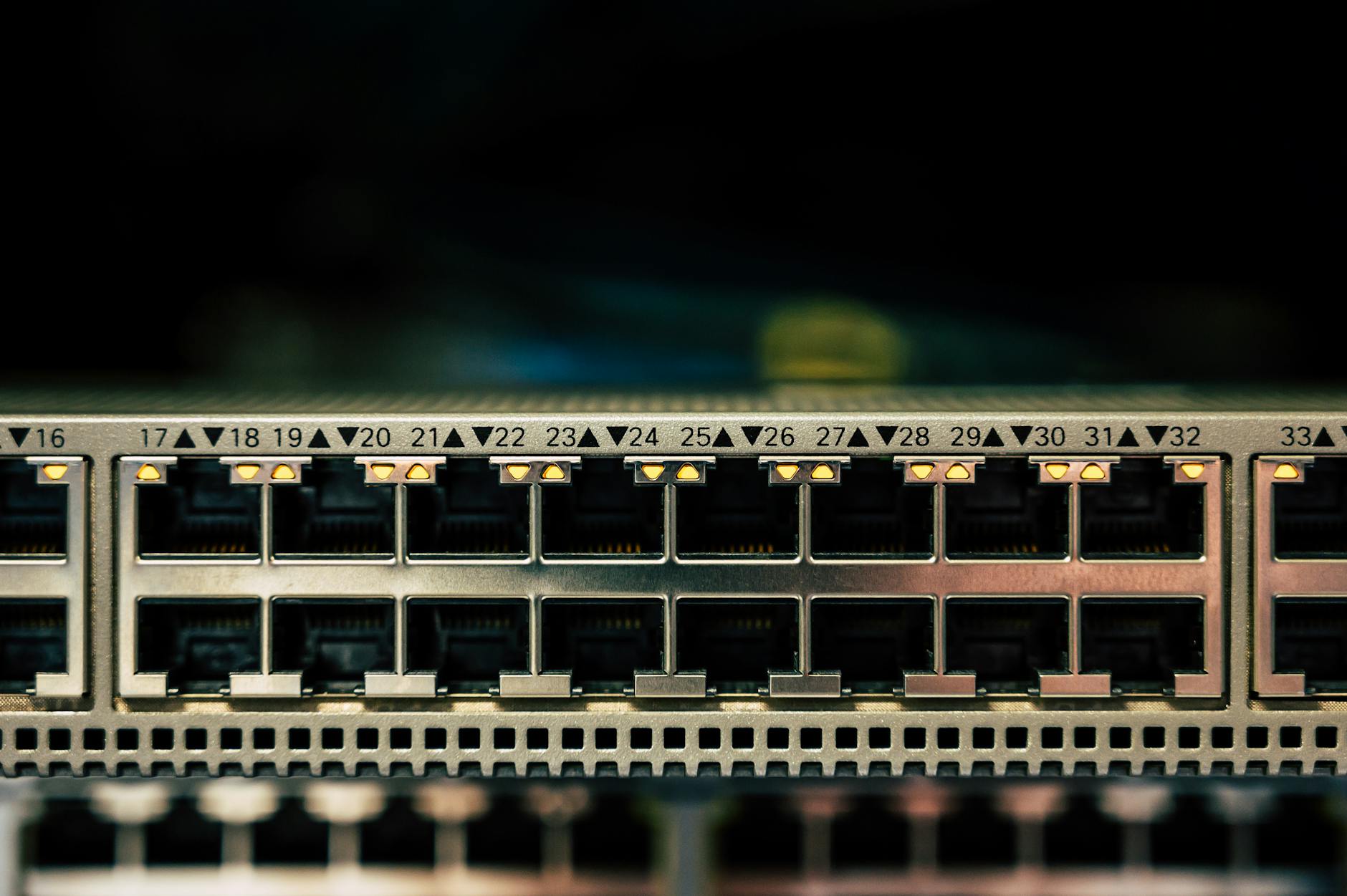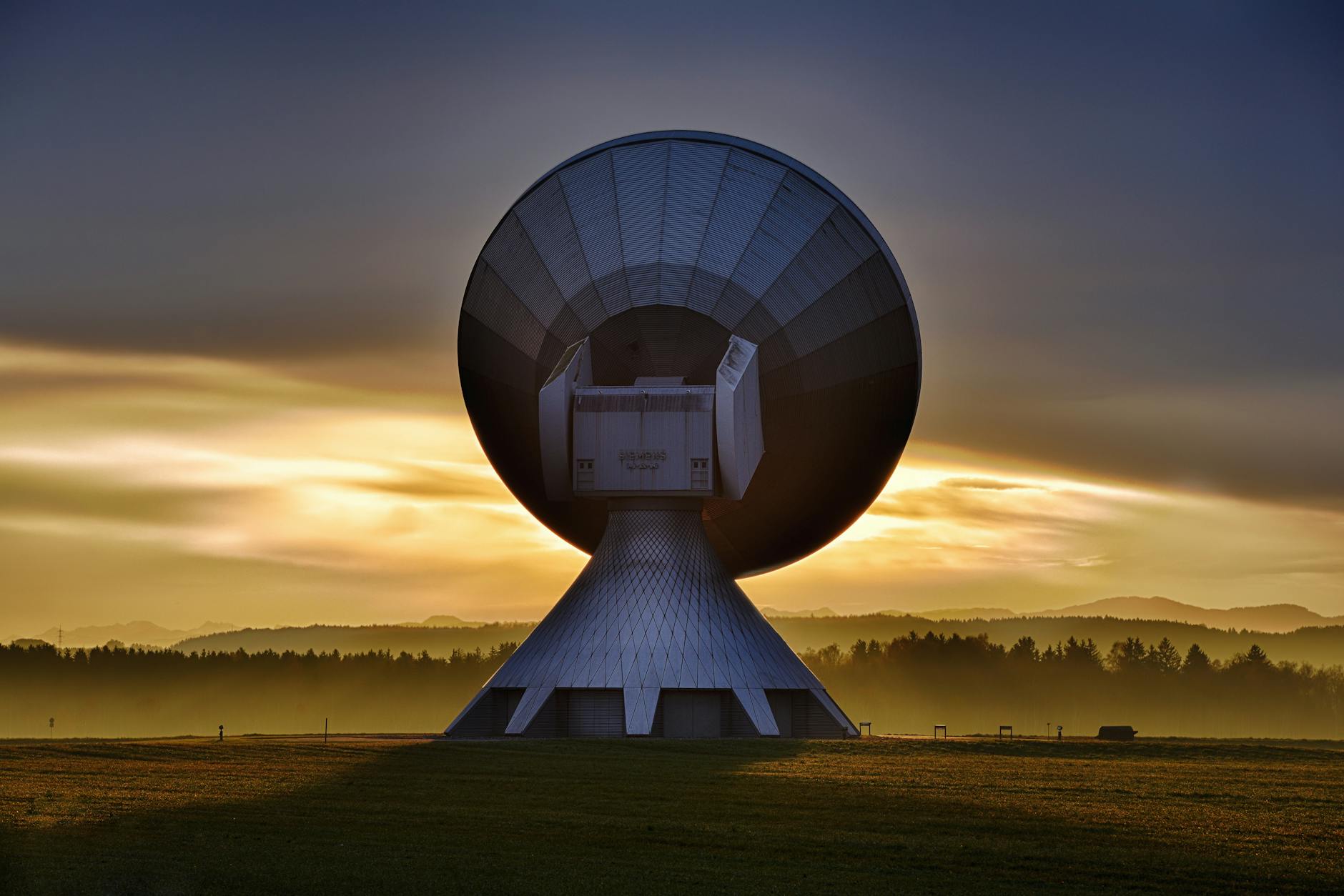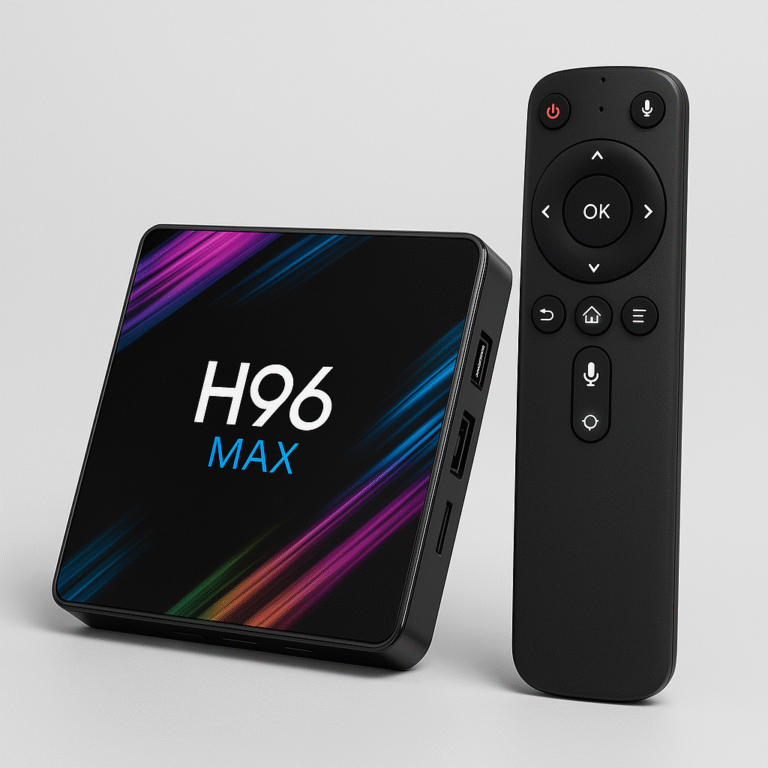Latest Features in Satellite Receivers [2025 Review]
![Latest Features in Satellite Receivers [2025 Review]](https://www.cccam2.net/wp-content/uploads/2025/06/futuristic-satellite-receiver-review-2025.jpg)
Latest Features in Satellite Receivers [2025 Review]
Satellite receivers keep the world plugged into TV, radio, and internet content wherever you live. They’ve become a go-to choice for anyone who wants reliable streaming, high picture quality, and more control over what they watch or listen to.
In 2025, these devices are getting smarter, faster, and packed with handy features. Expect to see better 4K support, smarter recording options, advanced signal stability, and voice control, all rolled out to match the demands of modern homes. If you’re looking to upgrade or want to see what’s new, this review covers the top updates and why they matter for your setup.
Cutting-Edge Connectivity: Enhanced Network Features in 2025
Satellite receivers in 2025 come with top-of-the-line network tools. These updates bring smoother streaming, smarter control, and shareable viewing across your whole home. No more settling for slow or spotty internet — this year’s receivers are ready for everything from next-gen Wi-Fi to easy management via the cloud. Here’s how these new network features are making satellite receivers smarter, more flexible, and simple for daily use.
Integration with Wi-Fi 6E and 5G
 Photo by Brett Sayles
Photo by Brett Sayles
New receivers bring support for Wi-Fi 6E and 5G, letting you tap into future-proof connections that are fast and stable. With Wi-Fi 6E, users get extra bandwidth thanks to the 6 GHz band, reducing interference and boosting overall performance. This means less buffering and smoother UHD streaming even when the whole family is online.
The shift to Wi-Fi 6E is especially helpful for tech-heavy homes. If you want a performance upgrade, look for models that highlight this feature. For a detailed comparison on this technology’s benefits, see WiFi 6 vs WiFi 6E: What’s the Difference in 2025?.
5G support marks another leap — newer receivers can connect using satellite-supported 5G, delivering high speeds and ultra-low latency, even in remote or rural locations. Growing industry partnerships are making 5G-satellite connectivity the default for reliable streaming and downloads. See the latest on this evolution in 5G-Satellite-Connectivity March 2025.
Highlights:
- Ultra-fast, lag-free experience even with multiple devices
- Stable signal in areas traditional internet often misses
- Stream 4K or 8K content with almost zero loading times
Seamless Multi-Room and Multi-Device Streaming
Modern households rarely use just one TV or screen. This year’s satellite receivers let you stream different channels or content in every room, without wires or complex setups. Multi-room support turns one receiver into the hub for every display in your house, making it perfect for families or shared spaces.
Systems designed for 2025 come with easy app-based controls and built-in multi-streaming. You can:
- Watch live sports in the living room, while someone else streams a movie in the bedroom
- Use your phone or tablet as a remote or even as a secondary viewer
- Sync audio or video across all rooms for parties, background viewing, or whole-home news coverage
Want to explore which systems ranked best this year? Check out the Best multi-room wireless systems 2025: all tested by expert for top picks and in-depth reviews.
Cloud-Based Channel and Content Management
Content management has moved to the cloud, giving users way more freedom and control. With cloud-powered satellite receivers, your preferences, channels, and settings stay synced, even if you switch between devices or replace your hardware.
This update lets you:
- Access your recordings and watchlists anywhere (at home or while traveling)
- Auto-update channel lineups and firmware without manual steps
- Enjoy cross-device continuity so your shows pick up where you left off
Cloud-based platforms make it simple to add new services, catch up on missed shows, or recover favorites if you get a new receiver. This move is streamlining the user experience across the board, helping providers offer faster service, better uptime, and more personalization. Dive deeper into these trends in What is a Cloud TV? All You Need to Know (2025 Updated).
Why this matters:
- Records, profiles, and watch history don’t vanish with a device swap
- Updates arrive faster and often automatically
- Enhanced flexibility for busy households and travelers
With these advances, managing your satellite entertainment is hands-off, fast, and accessible from anywhere you can get online.
Advances in Video and Audio Quality
Modern satellite receivers are raising the bar for home entertainment. Content feels sharper, brighter, and more lifelike, while audio now surrounds you in ways that make every movie night feel like you’re at the center of the story. Let’s break down the biggest leaps in AV quality that you’ll find in 2025’s best satellite receivers.
8K Ultra HD Support and Upscaling
 Photo by cottonbro studio
Photo by cottonbro studio
Ultra HD keeps getting better. Where 4K was once a buzzword, new satellite receivers now deliver full 8K Ultra HD output. This means four times the pixels of 4K. The level of detail is so high that even on very large screens, you don’t see jagged edges, just smooth lines and deep clarity.
What if you aren’t watching 8K content? No problem. Upscaling technology takes older videos or even 4K streams and uses smart processing to boost them toward 8K quality. That way, everything you watch looks crisper and more colorful.
Key points about 8K support and upscaling:
- 8K output provides ultra-fine detail and realism
- High-end receivers often include deep-learning upscaling to boost non-8K sources
- Future-proofs your TV setup as more true 8K content arrives
For a deeper dive into new AV display technologies, see the summary of coming trends in 9 AV Trends to Watch in 2025.
High Dynamic Range (HDR10+, Dolby Vision)
Vivid colors and lifelike contrast have become standard expectations. Receivers offering HDR10+ or Dolby Vision capability show a wider range of colors and deeper shadows, so sunsets glow and night scenes don’t turn to mush. Brightness adapts so details don’t wash out.
Both HDR10+ and Dolby Vision improve the visual punch of regular TV and streaming. Unlike simple “bright or dark” images, these formats keep nuance in every shot. You see sparkling highlights without losing the detail in dark corners.
What to look for:
- HDR10+: Open standard, supported by a wide range of TVs and content
- Dolby Vision: Dynamic metadata for scene-by-scene optimization, often considered the gold standard
- Better compatibility with modern streaming apps and premium TV models
This feature is a must if you crave lifelike visuals when binge-watching or streaming live events.
Next-Gen Surround Sound: Dolby Atmos and DTS:X
Picture quality alone isn’t enough. Satellite receivers in 2025 offer next-generation surround sound through Dolby Atmos and DTS:X—two formats that create a 3D sound bubble around you, not just in front or behind.
Dolby Atmos, for example, adds “height” channels, so sound can come from above. Imagine rain falling or jets flying overhead—you’ll feel the direction and movement. DTS:X lets each sound move independently, making action scenes and concerts much more immersive.
Why you’ll notice the difference:
- Voices and effects separate clearly—even in busy scenes
- Sound can “travel” in 3D space for total immersion
- Works with more home theater speaker layouts (and some soundbars)
For more about immersive AV experiences and how new formats are changing home entertainment, check out Bringing the Magic of Immersive Experiences to Life.
Expect even basic setups to sound bigger and more lifelike. You get the thrill of cinema audio without leaving your living room.
Smart Features and User Experience Upgrades
Satellite receivers in 2025 are smarter and much easier to use than ever before. Manufacturers are investing in features that not only make content discovery more enjoyable, but also turn the receiver into a “brain” for your living room. Enhanced personalization, voice-driven control, and sleek new user interfaces have made these devices as intuitive as the best smartphones. Here’s a closer look at the coolest upgrades you’ll notice.
AI-Powered Content Recommendations
Imagine never running out of something to watch that actually fits your taste. AI-driven content recommendations, now built into many new receivers, make that a reality. These smart systems learn what you love—be it sports, movies, dramas, or documentaries—and use real data to suggest shows you’ll actually want to watch.
Advanced AI systems in 2025:
- Study your viewing habits over time
- Analyze genres, actors, and even watch times to fine-tune suggestions
- Spot trends across household users and build dynamic, rotating recommendations
Besides saving endless browsing, these features help you stumble onto hidden gems and timely releases. For a broader look at how AI is transforming RF and satellite technologies, see 2025 Top Trends: Artificial Intelligence and Machine Learning Bring Smarts to RF Systems. AI isn’t just about helping you pick content; it also sharpens signal detection and streaming quality behind the scenes.
Voice Assistant and Smart Home Integration
 Photo by Ray Strassburger
Photo by Ray Strassburger
Voice assistants are now pretty much standard on high-end satellite receivers. With just a simple voice command, you can search for shows, adjust volume, change channels, and even control smart lights—no need to reach for the remote. Integration with major smart home systems like Google Assistant, Alexa, and Home Assistant is now smooth and reliable.
Key benefits users are loving:
- Hands-free control of your receiver and connected devices
- Multi-language support and improved understanding of casual commands
- Instant access to weather, sports scores, or music with a question
Receivers with smart home features can link up with everything from thermostats to security cameras, making them a true hub for the connected home. For insights into the rise of voice assistants and their future in home tech, check out The Future of Voice Assistants: What to Expect in 2025.
Redesigned User Interfaces and Remote Controls
Nothing frustrates users more than clunky interfaces and old-school remotes. Manufacturers have responded with sharper, snappier menus that put you in control without any learning curve.
Highlights of today’s UI upgrades:
- Clearer layouts that surface the things you use most, like favorites and current watchlists
- Faster navigation and minimal input lag on both TV screens and companion apps
- Large, easy-to-read fonts and high-contrast graphics for better accessibility
Remote controls in 2025 feature simplified button layouts, voice search, and custom shortcuts. Many come with mobile app support so you can control everything from your phone or tablet. For more on upgraded user interfaces, HD Satellite Receivers 2025 Trends and Forecasts 2033 covers ongoing improvements that make these systems a joy to use.
The bottom line? You get to the content you want without the hassle. Even first-time users will feel like experts from day one.
Security Enhancements and Privacy Controls
Satellite receivers for 2025 are not just smarter and faster—they are also far more secure. As content consumption shifts online and cloud management becomes the standard, keeping your viewing habits and household information private is a top priority. Manufacturers have responded with breakthrough features that make modern receivers safer for the whole family. Let’s unpack how these next-gen devices protect you and your loved ones.
Advanced Parental Controls and Content Restrictions
Parental controls have stepped up. Gone are the days of basic lockouts or PIN-protected channels. The latest satellite receivers offer layered content restriction tools that work in real-time, giving families more ways to manage what gets watched and when.
Key upgrades include:
- Dynamic age filters that automatically update with rating changes and new content releases
- User-specific profiles that let you set different allowed content for kids, teens, and adults
- Screen-time limits for each user, so everyone can find balance without constant reminders
- Real-time activity monitoring through the receiver app, with instant alerts if someone tries to bypass settings
These tools help parents enjoy peace of mind, ensuring young viewers don’t stumble on unsuitable material. They also create a home environment where responsible viewing is automatic, not manual.
End-to-End Data Encryption
With so much content and personal data flowing through satellite receivers, encryption is now at the center of system design. Top receivers for 2025 use end-to-end encryption to keep your information for your eyes only. This means all data, including streaming selections, personal preferences, and account details, is scrambled as it travels—from your remote to satellites to provider servers.
Modern encryption standards use advanced technology like AES-256 and zero-knowledge protocols to stop outsiders from snooping. Even with talk of quantum computing on the horizon, future-ready solutions like “space encryption” are already being implemented. For a peek at how satellite data is shielded against advanced threats, explore the insights in Future quantum computers will be no match for ‘space encryption’.
Want to know what works behind the scenes? Encryption best practices (like asymmetric algorithms and secure key storage) set the bar for new receivers. For a practical take, read about Encryption Best Practices 2025: Guide to Data Protection.
Regular OTA Security Updates
Security is never a “set it and forget it” task. Satellite receiver brands now put out regular over-the-air (OTA) security updates, making it easy to stay protected as new threats pop up. Instead of confusing manual downloads or trips to service centers, patches arrive over the air, usually when your device isn’t in use.
Why are OTA updates so important?
- Automatic protection: New vulnerabilities are fixed fast, often before users even notice a risk.
- No user action required: Updates install in the background, so you aren’t interrupted or forced to figure out techy steps.
- Improved privacy controls: Cloud-powered receivers push new privacy features and bug fixes just as quickly.
Keeping devices current is the most practical way to guard against data leaks or unwanted snooping. If you want to learn more about how the cloud is reshaping both privacy and receiver management, check out The Digital Overhaul of Satellite Operations (2025–2030).
 Photo by Branimir Klaric
Photo by Branimir Klaric
These security upgrades mean you can enjoy the latest content and features without giving up your privacy. In 2025, you control what you watch and who sees your data—making for both a smarter and safer home entertainment experience.
Energy Efficiency and Sustainability
Satellite receiver makers are listening to people who want less power use and more eco-conscious choices. The 2025 models step up with hardware and software that help the environment, shrink bills, and keep devices working longer. From leaner chips to smarter firmware, every piece is tuned for savings and sustainability.
Low-Power Consumption Chips
 Photo by Pixabay
Photo by Pixabay
The latest satellite receivers are powered by chips designed to sip, not gulp, electricity. These chipsets use:
- Smaller transistors: This means less heat, lower power draw, and a longer device life.
- Built-in sleep modes: Idle components turn off fast when not needed, saving even more power.
- Single-chip solutions: Combining processing, decoding, and network tasks onto one chip cuts energy loss and boosts speed.
Many 2025 receivers meet or beat ENERGY STAR standards, so users can enjoy premium features without big spikes in energy bills. Want to see how hardware has grown greener? Check the discussion on future satellite receiver innovations.
Eco-Friendly Manufacturing and Recyclable Components
Making receivers greener starts at the factory. Manufacturers now focus on eco-safe processes and materials, using:
- Recycled plastics and metals: This cuts down waste and brings new life to old materials.
- Lead-free solder: Safer for workers and the environment.
- Minimal packaging: Smaller boxes, less plastic, and more biodegradable materials keep landfills clear.
Many companies design products for easy disassembly, making it simpler to reuse or recycle key parts. Sustainability certifications and clearer labeling also help buyers pick greener tech. The 10 tech trends impacting the satellite industry in 2025 shine a spotlight on responsible design.
Firmware Optimizations for Extended Product Lifespan
Software can be just as “green” as hardware. Updated firmware keeps satellite receivers useful for years, not just months. Innovations include:
- Automatic power management: Firmware cuts power to idle modules and handles updates with less downtime.
- Continuous performance refinement: Makers push tweaks that help the device run smoother and cooler, without upgrades or repairs.
- Long-term software support: Receivers now get updates for longer, reducing “planned obsolescence” and keeping tech out of landfills longer.
Receivers stay up-to-date through over-the-air software delivery, keeping older devices running well and letting new environmental features rollout even after purchase. This approach lines up with broader moves in satellite control, as shown in the summary on the digital overhaul of satellite operations.
Energy efficiency and sustainability aren’t just buzzwords for satellite receiver developers in 2025—they’re part of every step, from the chip to the software.
Conclusion
Satellite receivers in 2025 offer more than just better signal or sharper images—they make home entertainment more reliable, safer, and user-friendly. Every upgrade, from AI recommendations to energy-saving hardware, puts control and comfort in the hands of viewers. People now expect smooth streaming, clear audio, and strong privacy as the standard, not a bonus.
These changes also help households save energy and reduce waste, showing that tech can be both innovative and responsible. As satellite receivers become smarter and more adaptable, users gain the freedom to enjoy content on their terms—anywhere, anytime, with less hassle.
Thanks for reading this review. If you’ve tried any of these features or have questions about your next upgrade, share your thoughts below. Stay tuned for more updates as the world of home entertainment keeps growing and improving.






